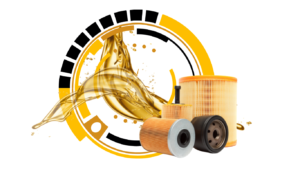Filtration and microfiltration are fundamental techniques to increase the useful life of the equipment because, in addition to avoiding failures and wear, they enable a better use of them, helping to reduce high maintenance costs. But do you know the difference between filtration and microfiltration? Between microfiltration and depth microfiltration? We have prepared special material for you to better understand the difference between these two techniques. And, of course, choose the best option for a better use of your equipment.

Filtering
The filtration process is the ability to retain contaminants in the fluid. Filtration or filtration is the process through which the fluid passes, through a porous permeable medium, in order to retain the contamination that was present in these oils. Despite being a simple process, it needs to be done carefully. It is necessary to choose the filtration system correctly and have adequate equipment for the filtration to be efficient. But it is important to remember: ordinary filtration cannot capture contaminations with small microns.
In general, common filters retain contamination between 20 and 25 microns. POC filters retain particles up to 10 microns. (Micra is 0 even if dividing 1 millimeter by 1000, the smaller the micron, the less the particle size).
In summary, the filterability of a material depends on three attributes:
1- Pressure of the fluid over the area of the filtering material;
2- Resistance of the filtering material to the passage of the fluid;
3- Resistance of the generated residue (filter cake).
Here at POC Filters, Filtration is the ability to retain contaminants in the fluid through the centrifugation process. It is one of the most effective alternatives to increase the life of fluids, capable ofeliminate 99% of water, 62% of sludge, 86% of particles up to 10 microns.
Filtration is a predictive maintenance technique that, day by day, is gaining importance to reduce costs and increase the performance of machines, equipment and fleets.
Microfiltration
First of all, you need to understand what the microfiltration process is like. It is based on the separation of particles present in fluids, oils and emulsions in which filter elements have pores of 0.1 to 10 microns. Thus, substances larger than the pores are retained from the fluid.
Unlike filtration, microfiltration is able to capture even smaller micron contamination, even microscopic 2 microns. This guarantees a much more effective retention, since these small particles are responsible for the biggest problems in the equipment. As we said, through microfiltration, the oil is passed through a set of absolute filters to completely eliminate contamination particles. It is important to remember that the process must be carried out even on new oils, as most of them can be contaminated at the factory.
Some benefits that show the advantages of microfiltration:
- The components are not worn out;
- Greater equipment availability;
- The maintenance cost is reduced;
- The components gain a longer service life;
- Ecologically responsible technique: has less impact on the environment.
Regarding this last advantage, it is important to remember that contaminated oil is often and unfortunately discarded in nature. Microfiltrated oil, on the other hand, can be reused.
See this article and discover how to lower microfiltration costs!
Depth Microfiltration
depth microfiltration it is the most effective technique. It removes particles more efficiently, provides more security in the process and, above all, offers many benefits for the equipment. The technique, depending on the system, can confer the retention of approximately 900 grams; the removal of the sludge from the fluid and an efficiency of up to 99.6% of cleaning in particles of up to 2 microns, in the Beta 300 ratio.
Conclusion
Filtration retains solid and liquid contamination, but cannot remove very small particles. Here at POC, filtration is able to retain up to 10 microns and 99% of the water present in the oils.
Microfiltration is capable of retaining even smaller contaminants, up to 2 microns, this with 99.6% efficiency.
Never forget: the predictive maintenance of your equipment must always be done. It is essential for your equipment to have a longer useful life. And, for a better result and to avoid unpleasant surprises with your equipment, the best option is depth microfiltration, the most effective technique among all those that involve oil filtration.




